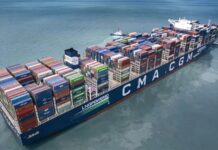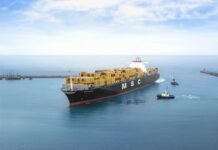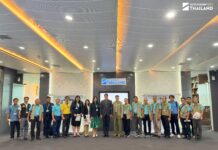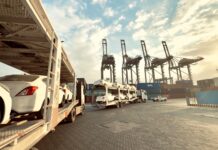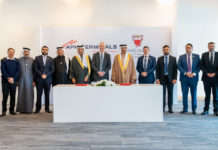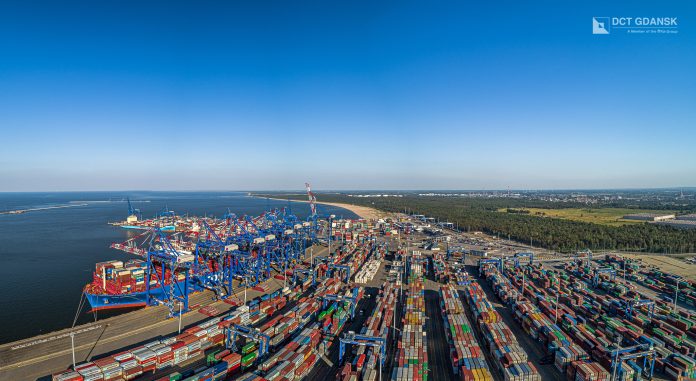
On 28 November 2022, Baltic Hub (formerly known as DCT Gdańsk), the operator of the largest container terminal in the Baltic Sea, ceremoniously kicked off construction of its third deep-water Terminal – T3 in the presence of the Secretary of the State in the Ministry of Infrastructure, Marek Gróbarczyk. When fully completed in the second quarter of 2025, the new terminal will have a 717-meter-long and 17.5-meter-deep quay wall. This will be Baltic Hub’s third deepsea berth that can handle the largest container vessels in the world. The new terminal will also provide 36.5 hectares of additional operating space. In total, the investment is worth 450 million EUR. The T3 project, which will be open for commercial operations after the first phase is completed in the first half of 2024, is a testament to Baltic Hub’s ambition to develop the largest container hub to serve Central and Eastern Europe as well as the Baltics and become one of the largest container terminal hubs in Europe.
Timeline of the investment
The construction of the T3 project will be executed in two phases. In the first phase, the consortium of the companies Budimex and DEME will build the 36-hectare terminal area next to Terminal 1. This new terminal area, which will be completed by the first half of 2024, will be entirely reclaimed from the sea. It will increase the handling capacity of the Baltic Hub by 1.5 million TEUs (20-foot containers) to 4.5 million TEUs per year. In the second phase, construction of the 717-meter-long, 17.5-meter-deep quay wall will commence. This is scheduled to start in early 2023 and be completed in the second quarter of 2025.
The T3 project also involves purchasing seven quay cranes capable of handling the world’s largest vessels, as well as 20 semi-automated Rail Mounted Gantry (RMG) cranes for the container yard, which operators will be able to control remotely from ergonomically-designed workspaces. This will allow for a safer, more efficient, modern and more comfortable working environment 365 days a year.
New opportunities for T3
Baltic Hub is Poland’s largest container terminal and has experienced exponential growth from having just one deep-water quay and a capacity of 500,000 TEUs when it was founded 15 years ago to becoming a true ‘Baltic Hub’ with two deepsea quays that handled more than 2.09 million TEUs in 2021 with a total annual capacity of up to 3 million TEUs. At this time, Baltic Hub has 1,300 meters of quay, 14 Ship-to-Shore (STS) cranes and an annual capacity of 2.7 MTEUs.
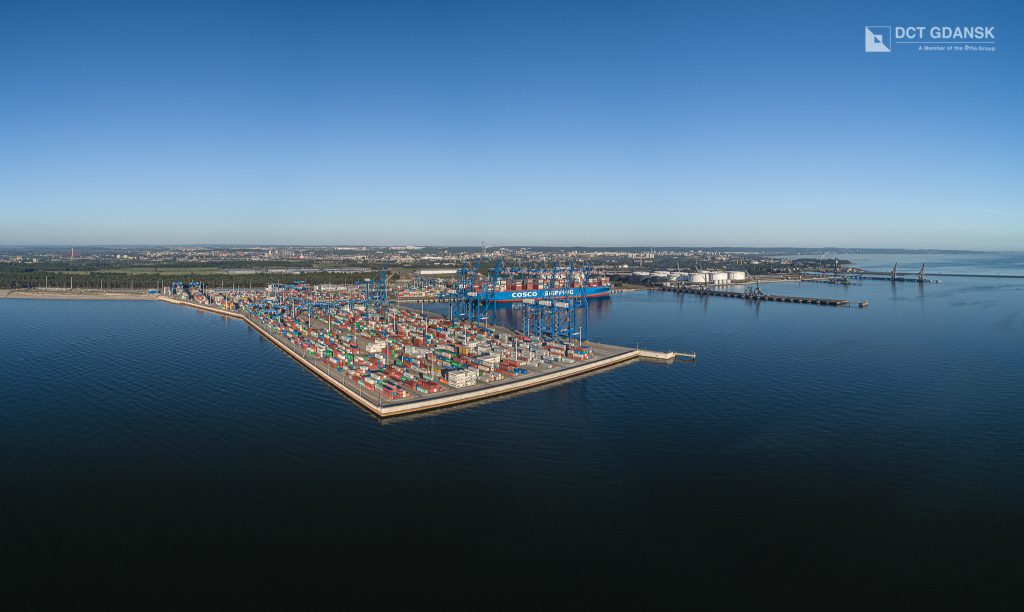
“Just ten years ago, Poland was not a significant player in container handling”, said Marek Gróbarczyk, Secretary of State in the Ministry of Infrastructure, Government Plenipotentiary for Maritime Economy. Today, we are starting a historic investment – the largest container port. I think that the Management Board of Baltic Hub has not yet said the last word as their plans are very ambitious.”
In addition, Baltic Hub has become a transport gateway to Central and Eastern Europe, with inland destinations such as the Czech Republic, Slovakia, Hungary and Germany. This is a result of continuous investments over the years that elevated its rail capacity to 750,000 TEUs in 2020.
Baltic Hub CEO Charles Baker promises that Baltic Hub and its partners will carry out the project with the highest environmental standards right from the planning stage: “Baltic Hub is a true 21st-century terminal, and the T3 development will bring the latest low-carbon technology which any European port would be proud of. We again emphasise that we are taking internationally recognised precautionary measures to protect the project area’s environment, marine life and habitats. This construction from A to Z will reflect our commitment to sustainable investments, for example, through using low-carbon concrete and deploying low-emission equipment – such as electric yard cranes.”
Baker adds, “T3 will further enrich the services that Baltic Hub offers. Moreover, we will be able to attract new services, destinations and shipping alliances. By developing additional transhipment capacity and opening up new sea connections, we will also boost the Polish economy as a whole.”
The importance of the investment is also emphasised by Łukasz Greinke, the President of the Port of Gdansk. “We are witnessing another milestone. After a long investor selection procedure, we selected DCT Gdańsk (today Baltic Hub) as the entity that submitted the most advantageous offer. Today we are moving to the next stage – the investment is being commenced. We keep our fingers crossed, wish you good luck and assure you of support at every investment stage. I hope that in two years, we will meet at the ceremonial opening of another quay.”
Poland will be 36ha bigger
The commencement of construction works at the new T3 Baltic Hub terminal completes the stage of work on executive designs and preparation of the construction site. These activities have been carried out as part of the so-called “early start” since the Budimex – Deme consortium signed the contract in July 2022. Now the consortium is starting works on the construction of a new terminal. The dredging of the sea route to the new terminal and the reclamation work under its basic structure is underway. These works will be carried out, among others, by a special dredging ship and using the appropriate material from the bottom of the sea to construct a platform that will form the base of the new terminal. In addition, the consortium begins to build tight walls around the future terminal.
“We have completed the design and preparatory work. It’s the time of commencement for basic works on the construction of the T3 Baltic Hub. In the coming months, we will expand the land territory of the Polish by 36 hectares. We have exceptional experience in the field of hydro-technical works at the largest investments in the country. We will use this knowledge and the experience of our engineers together with the equipment in the construction of the new terminal. The construction works themselves assume the execution of excavation works with a cubic capacity of over 4 million m3 and the construction of a mooring line with a length of over 700 m. The T3 terminal itself will have an area of over 360,000 m2, an operational depth of 17 m and will be semiautomatic, which is a novelty in Poland and a trend currently present in the world”, says Cezary Łysenko, Director of the Infrastructure Construction Division of Budimex SA.
Laurent Closset, Regional Director for Northern Europe at DEME, adds: “We are proud to be helping to build this terminal where we will carry out dredging and land reclamation work. We look forward to working with our partner in the consortium, Budimex, to combine our expertise to contribute to implementing ambitious development plans of the Baltic Hub”.
อัพเดตข่าวสารและบทความที่น่าสนใจในอุตสาหกรรมโลจิสติกส์ก่อนใคร ผ่าน Line Official Account @Logistics Mananger เพียงเพิ่มเราเป็นเพื่อน @Logistics Manager หรือคลิกที่นี่




